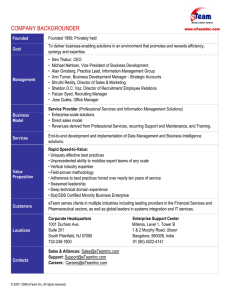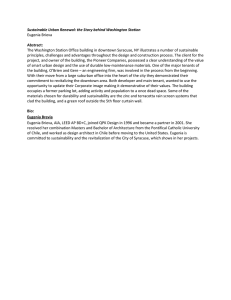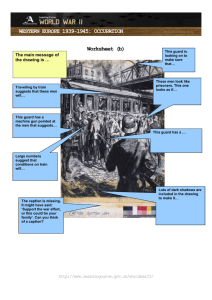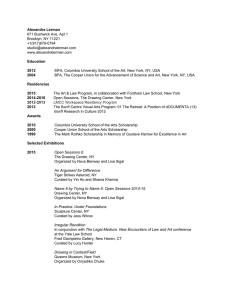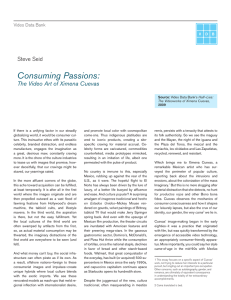VDB TV Presents: Invalid data – dreaming
advertisement
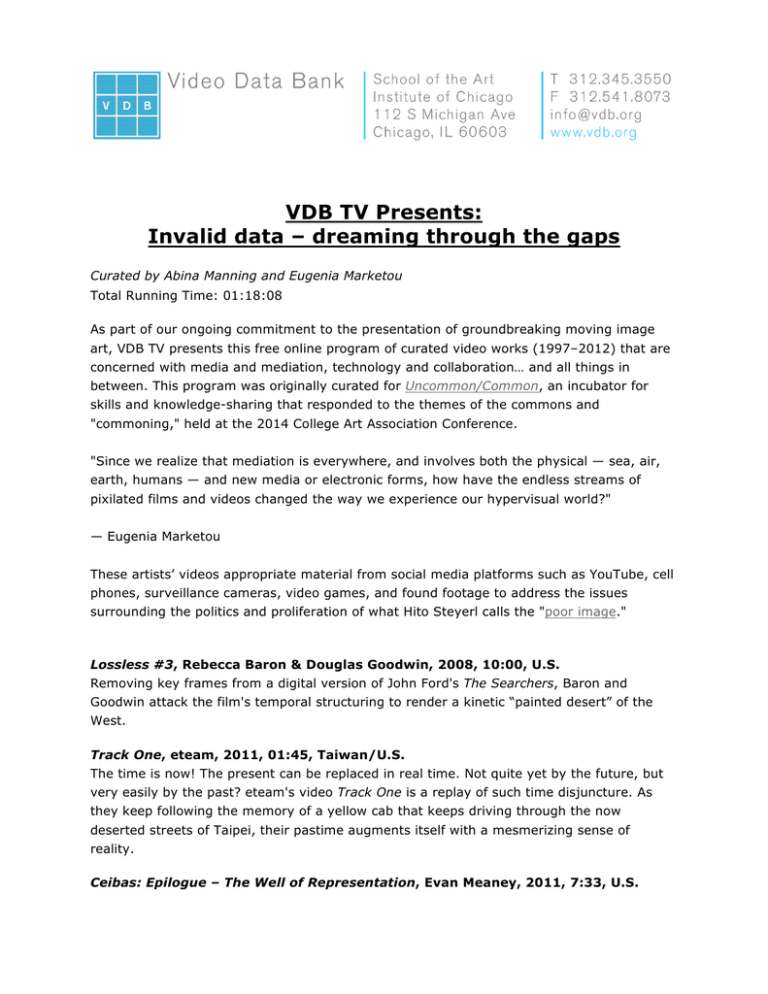
VDB TV Presents: Invalid data – dreaming through the gaps Curated by Abina Manning and Eugenia Marketou Total Running Time: 01:18:08 As part of our ongoing commitment to the presentation of groundbreaking moving image art, VDB TV presents this free online program of curated video works (1997–2012) that are concerned with media and mediation, technology and collaboration… and all things in between. This program was originally curated for Uncommon/Common, an incubator for skills and knowledge-sharing that responded to the themes of the commons and "commoning," held at the 2014 College Art Association Conference. "Since we realize that mediation is everywhere, and involves both the physical — sea, air, earth, humans — and new media or electronic forms, how have the endless streams of pixilated films and videos changed the way we experience our hypervisual world?" — Eugenia Marketou These artists’ videos appropriate material from social media platforms such as YouTube, cell phones, surveillance cameras, video games, and found footage to address the issues surrounding the politics and proliferation of what Hito Steyerl calls the "poor image." Lossless #3, Rebecca Baron & Douglas Goodwin, 2008, 10:00, U.S. Removing key frames from a digital version of John Ford's The Searchers, Baron and Goodwin attack the film's temporal structuring to render a kinetic “painted desert” of the West. Track One, eteam, 2011, 01:45, Taiwan/U.S. The time is now! The present can be replaced in real time. Not quite yet by the future, but very easily by the past? eteam's video Track One is a replay of such time disjuncture. As they keep following the memory of a yellow cab that keeps driving through the now deserted streets of Taipei, their pastime augments itself with a mesmerizing sense of reality. Ceibas: Epilogue – The Well of Representation, Evan Meaney, 2011, 7:33, U.S. In part a remake of Hollis Frampton’s Gloria! (1979), in part a repurposing of hacked, 16-bit video game technology; The Well of Representation asks us to reconsider our fear of the liminal. Natural Instincts, Ximena Cuevas, 1999, 03:00, Mexico/U.S. “This is a video of musical terror where I superficially—this is the beginning of a larger project — look at one of the Mexican phenomena that horrifies me the most: internalized racism, being ashamed of one's own roots. The fantasy of waking up white.” — Ximena Cuevas Suspension, Anthony Discenza, 1997, 8:40, U.S. Constructed from a destroyed rescan of fashion magazine ads and a video self-portrait, Suspension is a meditation on the implicitly narcissistic nature of desire within a commodified context. Traders Leaving the Exchange, A Guard and the Street V.1, Les LeVeque, 2011, 15:00, U.S. “A 15-minute unstable remix of a video I shot in 2000, and edited in 2011, of the "members" door of the New York Stock Exchange as the traders were leaving at the end of their workday. A security guard is positioned in front of the "members" door. The shot is a close up of the door and the guard taken from across the street, busy with traffic and pedestrians.” — Les LeVeque The Hunch that Caused the Winning Streak and Fought the Doldrums Mightily, Stephanie Barber, 2010, 2:05, U.S. “These interiors — the photos hung on the walls, the furniture and rugs, houseplants and televisions — are collaged from photos of various domestic items from Croatian, Serbian and Bosnian homes brought together to suggest one continuous home. I'm interested in the tension between the visible and the invisible cultural markers represented here. The British parade matted into the televisions, the Japanese musician and Ethiopian music exaggerate this collision.” — Stephanie Barber The Invisible World, Jesse McLean, 2012, 20:15, U.S. A deceased hoarder, reconstituted through technology, recounts a difficult childhood as inhabitants of a virtual world struggle to reconcile materialistic tendencies. A scientist leads an effort to understand the passage of time, but the data is unreliable. The question remains, what happens to our things after we are gone? Actions in Action, HalfLifers, 1997, 10:30, U.S. The first work in the Action series plunges into a world of frantic heroes trapped in a continual crisis of dissolution and reification. An ordinary domestic setting is recast as a psychoactive landscape in which the concept of function becomes situational and fluid. Only through the strategic application of organic and inorganic “devices” can this zone be successfully navigated and the mission be saved.
